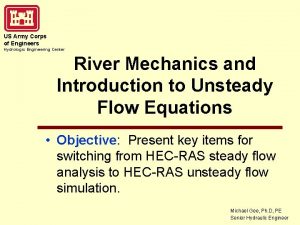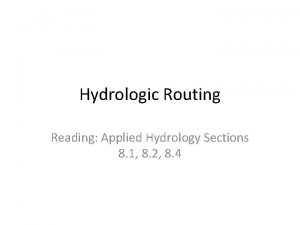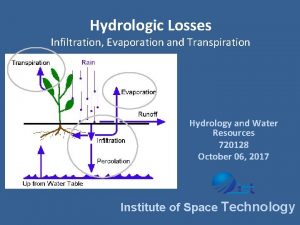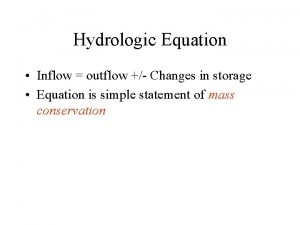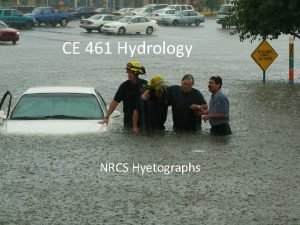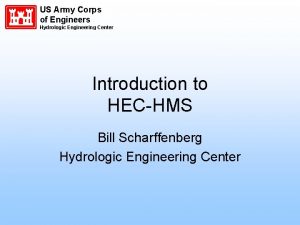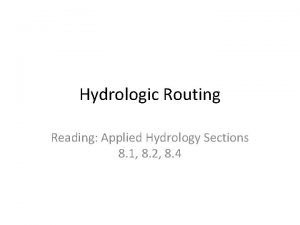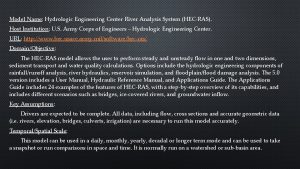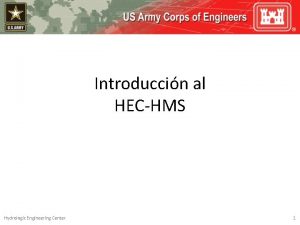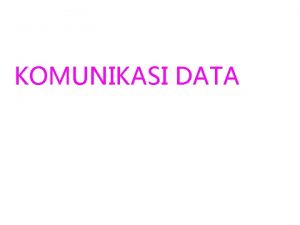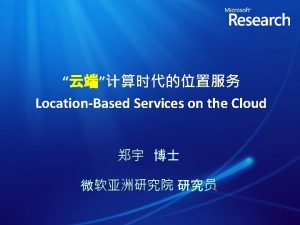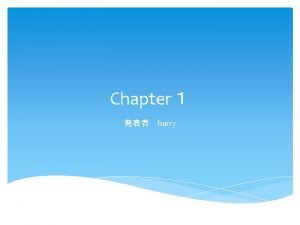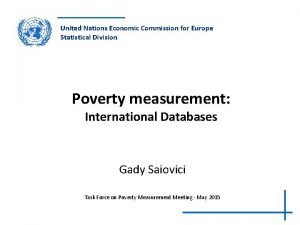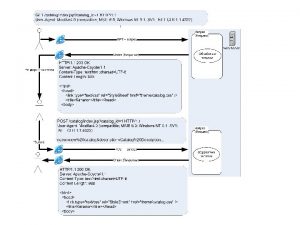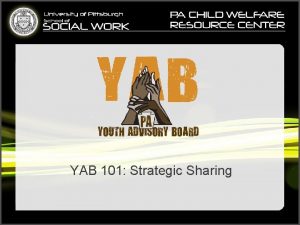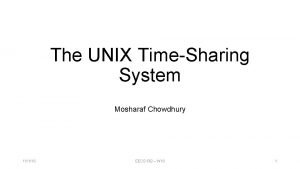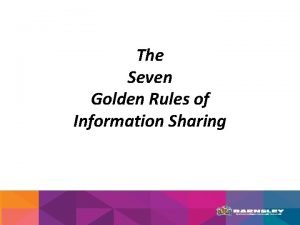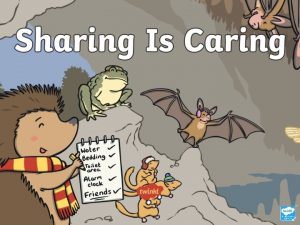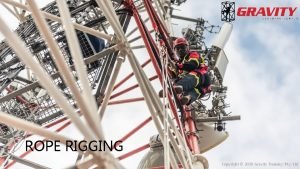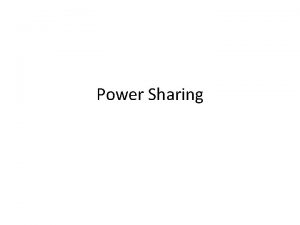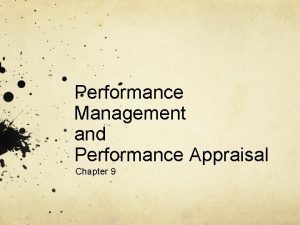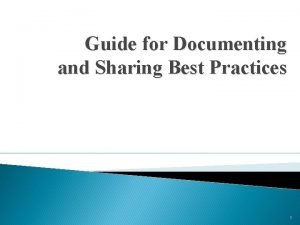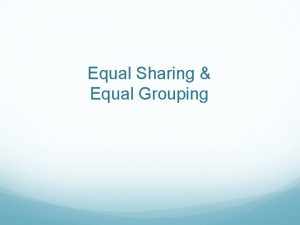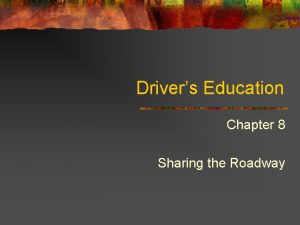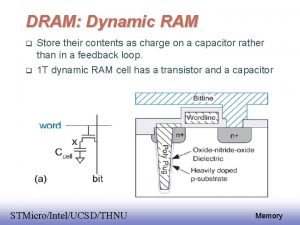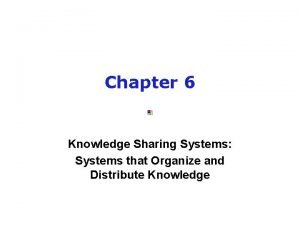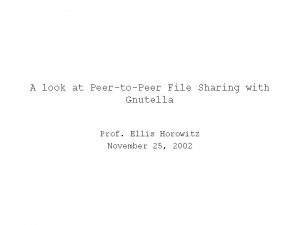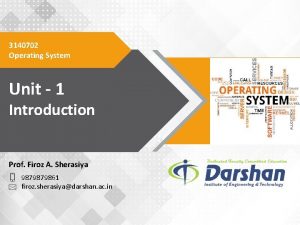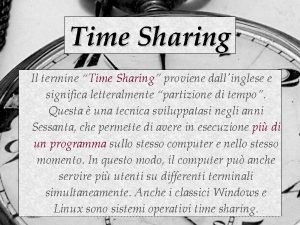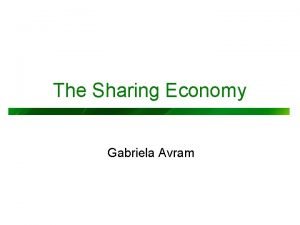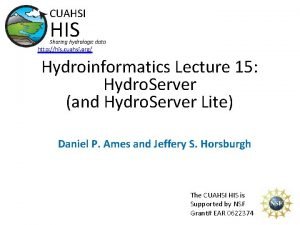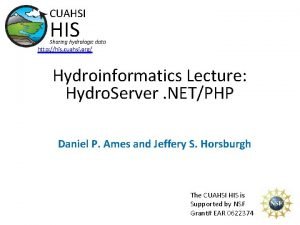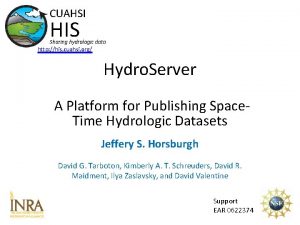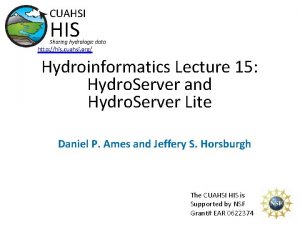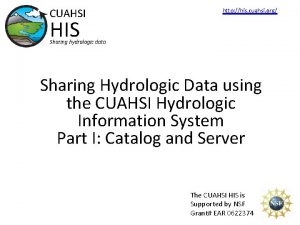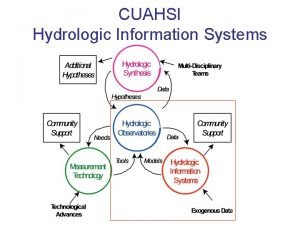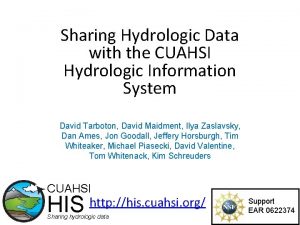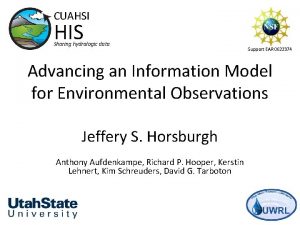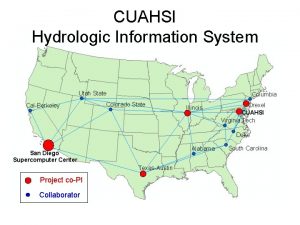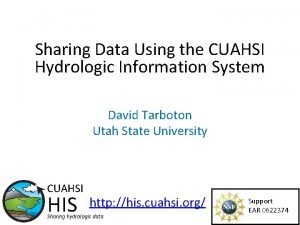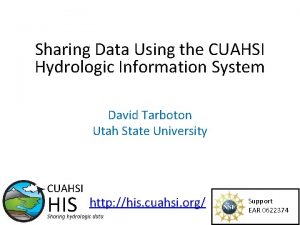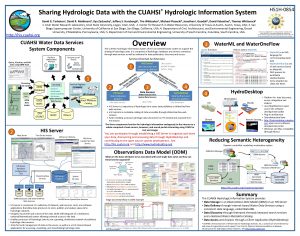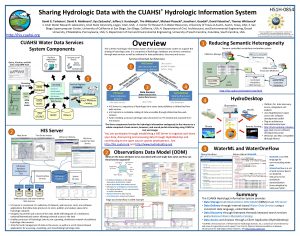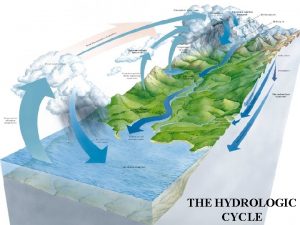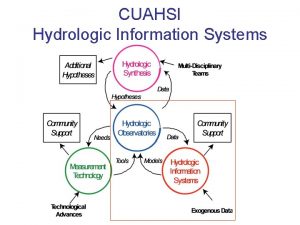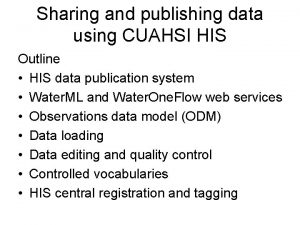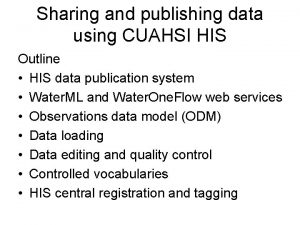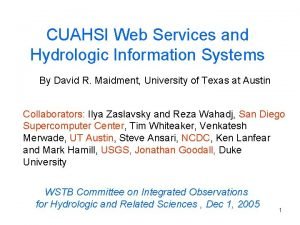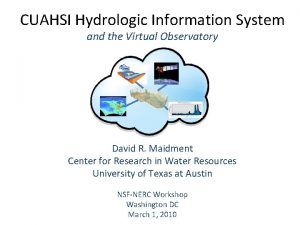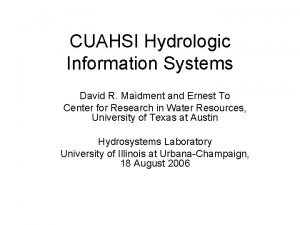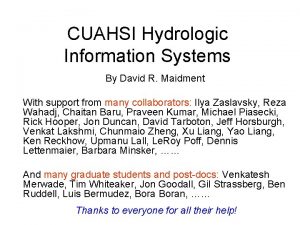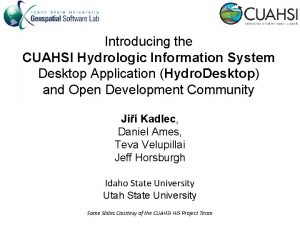CUAHSI HIS Sharing hydrologic data http his cuahsi













































- Slides: 45

CUAHSI HIS Sharing hydrologic data http: //his. cuahsi. org/ Hydro. Server A Platform for Sharing Hydrologic Data Jeffery S. Horsburgh, David G. Tarboton, Kimberly A. T. Schreuders, David R. Maidment, Ilya Zaslavsky, and David Valentine And the rest of the CUAHSI HIS Team Support EAR 0622374

Outline • • Data Models Observations Data Model Hydro. Server Next Steps

Terrain flow information model. The way that data is organized can enhance or inhibit the analysis that can be done Raw DEM Flow Field Pit Removal (Filling) Channels, Watersheds, Flow Related Terrain Information

Observation Data Model for hydrologic and environmental measurements The way that data is organized can enhance or inhibit the analysis that can be done Streamflow Precipitation & Climate Water Quality Groundwater levels Soil moisture data Flux tower data

Why an Observations Data Model • Provides a common persistence model for observations data • Syntactic heterogeneity (File types and formats) • Semantic heterogeneity – Language for observation attributes (structural) – Language to encode observation attribute values (contextual) • Publishing and sharing research data • Metadata to facilitate unambiguous interpretation • Enhance analysis capability 5

Scope • Focus on Hydrologic Observations made at a point • Exclude Remote sensing or grid data. • Primarily store raw observations and simple derived information to get data into its most usable form. • Limit inclusion of extensively synthesized information and model outputs at this stage.

What are the basic attributes to be associated with each single data value and how can these best be organized? Value Offset Date. Time Variable Offset. Type/ Reference Point Location Units Source/Organization Interval (support) Accuracy Data Qualifying Comments Censoring Method Quality Control Level Sample Medium Value Type Data Type

CUAHSI Observations Data Model Streamflow Groundwater levels • A relational database at the single observation level Precipitation Soil (atomic model) & Climate moisture • Stores observation data made at points Flux tower Water Quality • Metadata for unambiguous data interpretation • Traceable heritage from raw “When” Time, T measurements to usable t A data value information vi (s, t) • Standard format for data s “Where” sharing Space, S • Cross dimension retrieval Vi and analysis “What” Variables, V

Data Storage – Relational Database Values Sites Value Date Site Variable Value Name Date Site Name Latitude Longitude Latitude Site Variable Longitude 4. 5 Cane 3/3/2007 Creek 41. 1 1 Streamflow -103. 2 Site Name Latitude Longitude 4. 2 Cane 3/4/2007 Creek 41. 1 1 Streamflow -103. 2 1 Cane Creek 41. 1 -103. 2 33 Town 3/3/2007 Lake 40. 3 2 Temperature -103. 3 2 Town Lake 40. 3 -103. 3 34 Town 3/4/2007 Lake 40. 3 2 Temperature -103. 3 Simple Intro to “What Is a Relational Database”

Why Use a RDBMS • Mature and stable technology • Structured Query Language (SQL) • Sharing of data among multiple applications – Data integrity and security – Access by multiple users at the same time – Tools for backup and recovery • Reduced application development time

CUAHSI Observations Data Model http: //his. cuahsi. org/odmdatabases. html Horsburgh, J. S. , D. G. Tarboton, D. R. Maidment and I. Zaslavsky, (2008), A Relational Model for Environmental and Water Resources Data, Water Resour. Res. , 44: W 05406, doi: 10. 1029/2007 WR 006392.

Simplified ODM Structure Units. ID 12 23 Site. ID 1 2 Site. Code Acme. P 1 Acme. PR 2 Sites Table Site. Name Backyard Pond Mill River gage Station Spatial References Table Spatial. Reference. ID SRSName 0 Unknown 1 4267 NAD 27 2 4269 NAD 83 Latitude 34. 565 34. 2 Longitude Lat. Long. ID -93. 232 1 -93. 4 1 Units Table Units. Name parts per million cubic feet per second Units. Abbreviation ppm cfs

What are the basic attributes to be associated with each single data value and how can these best be organized? Value Offset Date. Time Variable Offset. Type/ Reference Point Location Units Source/Organization Interval (support) Accuracy Data Qualifying Comments Censoring Method Quality Control Level Sample Medium Value Type Data Type

Discharge, Stage, Concentration and Daily Average Example

Site Attributes Site. Code, e. g. NWIS: 10109000 Site. Name, e. g. Logan River Near Logan, UT Latitude, Longitude Geographic coordinates of site Lat. Long. Datum Spatial reference system of latitude and longitude Elevation_m Elevation of the site Vertical. Datum of the site elevation Local X, Local Y Local coordinates of site Local. Projection Spatial reference system of local coordinates Pos. Accuracy_m Positional Accuracy State, e. g. Utah County, e. g. Cache

Independent of, but can be coupled to Geographic Representation Arc Hydro ODM Feature Observations Data Model Sites Site. ID Site. Code Site. Name Latitude Longitude … 1 1 OR Coupling. Table Site. ID 1 Hydro. ID Waterbody Hydro. Point Hydro. ID Hydro. Code FType Name Junction. ID * Complex. Edge. Feature 1 Hydro. ID Hydro. Code FType Name Area. Sq. Km Junction. ID * Edge. Type Flowline Shoreline Hydro. ID Hydro. Code Drain. ID Area. Sq. Km Junction. ID Next. Down. ID Simple. Junction. Feature Hydro. Edge Hydro. ID Hydro. Code Reach. Code Name Length. Km Length. Down Flow. Dir FType Edge. Type Enabled Watershed 1 Hydro. Network Hydro. Junction Hydro. ID Hydro. Code Next. Down. ID Length. Down Drain. Area FType Enabled Ancillary. Role 1 *

Variable attributes Cubic meters per second Flow m 3/s Variable. Name, e. g. discharge Variable. Code, e. g. NWIS: 0060 Sample. Medium, e. g. water Value. Type, e. g. field observation, laboratory sample Is. Regular, e. g. Yes for regular or No for intermittent Time. Support (averaging interval for observation) Data. Type, e. g. Continuous, Instantaneous, Categorical General. Category, e. g. Climate, Water Quality No. Data. Value, e. g. -9999

Scale issues in the interpretation of data The scale triplet b) Spacing length or time c) Support quantity a) Extent length or time From: Blöschl, G. , (1996), Scale and Scaling in Hydrology, Habilitationsschrift, Weiner Mitteilungen Wasser Abwasser Gewasser, Wien, 346 p.

The effect of sampling for measurement scales not commensurate with the process scale (a) spacing too large – noise (aliasing) (b) extent too small – trend (c) support too large – smoothing out From: Blöschl, G. , (1996), Scale and Scaling in Hydrology, Habilitationsschrift, Weiner Mitteilungen Wasser Abwasser Gewasser, Wien, 346 p.

Data Types • • • Continuous (Frequent sampling - fine spacing) Sporadic (Spot sampling - coarse spacing) Cumulative Incremental Average Maximum Minimum Constant over Interval Categorical

Water Chemistry from a profile in a lake

Stage and Streamflow Example

Value. Accuracy A numeric value that quantifies measurement accuracy defined as the nearness of a measurement to the standard or true value. This may be quantified as an average or root mean square error relative to the true value. Since the true value is not known this may should be estimated based on knowledge of the method and measurement instrument. Accuracy is distinct from precision which quantifies reproducibility, but does not refer to the standard or true value. Value. Accuracy Accurate Low Accuracy, but precise

Loading data into ODM OD Data Loader • Interactive OD Data Loader (OD Loader) – Loads data from spreadsheets and comma separated tables in simple format SDL • Scheduled Data Loader (SDL) – Loads data from datalogger files on a prescribed schedule. – Interactive configuration • SQL Server Integration Services (SSIS) – Microsoft application accompanying SQL Server useful for programming complex loading or data management functions SSIS

3 Work from Out to In 5 7 At last … 1 2 6 And don’t forget … 4 CUAHSI Observations Data Model http: //www. cuahsi. org/his/odm. html

Managing Data Within ODM Tools • Query and export – export data series and metadata • Visualize – plot and summarize data series • Edit – delete, modify, adjust, interpolate, average, etc.

Hydro. Server Goals • A platform for publishing space-time hydrologic datasets that is: – Self contained fully documented with local control of data – Makes data universally available – Combine spatial data and observational data – Autonomous – e. g. , functional independent of the rest of HIS

Internet Applications Point Observations Data Ongoing Data Collection Historical Data Files ODM Database GIS Data Get. Sites Get. Site. Info Get. Variable. Info Get. Values Water. ML Water. One. Flow Web Service Hydro. Server Data presentation, visualization, and analysis through Internet enabled applications

http: //hydroserver. codeplex. com http: //icewater. usu. edu/map http: //littlebearriver. usu. edu/

Syntactic Heterogeneity Multiple Data Sources With Multiple Formats Excel Files Text Files Access Files Data Logger Files ODM Observations Database From Jeff Horsburgh

Semantic Heterogeneity General Description of Attribute USGS NWISa EPA STORETb Code for location at which data are collected "site_no" "Station ID" Name of location at which data are collected "Site" OR "Gage" "Station Name" Code for measured variable "Parameter" ? c Name of measured variable "Description" "Characteristic Name" "datetime" "Activity Start" "agency_cd" "Org ID" Name of measured variable "Discharge" "Flow" Units of measured variable "cubic feet per second" "cfs" "2008 -01 -01" "2006 -04 -04 00: 00" "41° 44'36" "41. 7188889" "Spring, Estuary, Lake, Surface Water" "River/Stream" Structural Heterogeneity Time at which the observation was made Code that identifies the agency that collected the data Contextual Semantic Heterogeneity Time at which the observation was made Latitude of location at which data are collected Type of monitoring site United States Geological Survey National Water Information System (http: //waterdata. usgs. gov/nwis/). United States Environmental Protection Agency Storage and Retrieval System (http: //www. epa. gov/storet/). c An equivalent to the USGS parameter code does not exist in data retrieved from EPA STORET. a b From Jeff Horsburgh

Overcoming Semantic Heterogeneity • ODM Controlled Vocabulary System – ODM CV central database – Online submission and editing of CV terms – Web services for broadcasting CVs Variable Name Investigator 1: Investigator 2: Investigator 3: Investigator 4: “Temperature, water” “Water Temperature” “Temp. ” ODM Variable. Name. CV Term … Sunshine duration Temperature Turbidity … From Jeff Horsburgh

Dynamic controlled vocabulary moderation system ODM Data Manager ODM Website ODM Tools XML Local ODM Database Local Server ODM Controlled Vocabulary Moderator ODM Controlled Vocabulary Web Services http: //his. cuahsi. org/mastercvreg. html Master ODM Controlled Vocabulary From Jeff Horsburgh

Hydro. Server Implementation in WATERS Network Information System National Hydrologic Information Server San Diego Supercomputer Center • 11 WATERS Network test bed projects • 16 ODM instances (some test beds have more than one ODM instance) • Data from 1246 sites, of these, 167 sites are operated by WATERS investigators

ICEWATER – A Regional HIS • ICEWATER – INRA Constellation of Experimental WATERsheds • Coalition of 8 universities MT WA OR ID WY • Point Observations – – – Stream gages Water quality sampling Weather stations Soil moisture Snow monitoring Groundwater level/quality • Spatially Distributed Data – Land use/cover – Terrain – Hydrography http: //icewater. inra. org NV AK UT CO AZ NM CA

Sustainability Principles • Servers maintain their own complete data and metadata. Local control of data that is complete and self describing • Adherence to standards • Open Source • Minimize custom programming • Maintain syntactic and semantic consistency • Data repositories are required

What’s next for Hydro. Server • Security and Data Access Control • Web based data loader • Data model enhancements – Flexibility in attributes – Moving platforms – Additional data types • Tighter integration with Hydrologic Ontology • Enhanced spatial data sharing

Proposed Hydro. Server Access Control User Authentication Hydro. Server Services Security Service Water. One. Flow Web Service Data Store (ODM) Data consumer provides credentials Security service returns a token User Authorization and Data Access Data consumer calls Get. Values using the token The token is evaluated to see if the consumer is authentic and authorized True (Authorized), False (Not Authorized), or Error (Token Not Found) True – Get Data. Values from the data store Returns Data. Values Data Access Logged Data returned to consumer

Why Access Control • Significant feedback from academic users: – – – – Control who can download data How, when, and if data go from private to public Publish papers before data are released Track who is downloading their data Have and use a data use/access agreement Only expose the best or highest quality data Integrate data organization, management, and publication • Some say that they will not publish their data using the CUAHSI HIS until they have access control

• An online collaborative environment centered on the sharing of hydrologic data and models – Simple and easy to use – Find, create, share, connect, integrate, work together online – Leverage existing online sharing and collaboration platforms – Hydro value added

Purpose • Facilitate collaboration • Provide a place for Hydro. Desktop users to simply upload and publish data • Support immutable archive data collections as well as transient “work in progress” data sharing • Support seeing inside data collections to facilitate integration and synthesis across datasets

An example From Tim Whiteaker

CUAHSI Online Data analysis and publication use case 1 6 Hydro. Desktop 11 Observer or instrument 5 4 10 Web Services (Water. ML) 2 9 3 Hydro. Server Present HIS Central Web Interface (HUBzero) 8 7 Data Storage (i. RODS) CUAHSI Online

Summary • Hydro. Server provides a self contained autonomous data publication system • Local control of data, but universally accessible • Downloadable user (data publisher) configurable software stack that contains: – ODM and associated tools – Water. One. Flow web services – Geographic data sharing using WFS, WCS, WMS from Arc. GIS server – Time Series Analyst – Arc. GIS server based web map application – Hydro. Server Capabilities web service that publishes metadata about regions and services (observational and spatial) • Registering with HIS Central makes your data searchable

CUAHSI HIS Sharing hydrologic data Questions? http: //his. cuahsi. org/ Support EAR 0622374
 Hydrologic engineering center
Hydrologic engineering center Difference between reservoir routing and channel routing
Difference between reservoir routing and channel routing Hydrologic routing
Hydrologic routing Hydrologic losses
Hydrologic losses Storage equation
Storage equation Hydrologic abstractions
Hydrologic abstractions Continuity equation hydrology
Continuity equation hydrology Rickley hydrologic
Rickley hydrologic Continuity equation hydraulics
Continuity equation hydraulics Hydrologic engineering center
Hydrologic engineering center Water cycle the hydrologic cycle
Water cycle the hydrologic cycle Hydrograph
Hydrograph Hydrologic engineering center
Hydrologic engineering center Hydrologic engineering center
Hydrologic engineering center Komunikasi data merupakan gabungan dua macam teknik adalah
Komunikasi data merupakan gabungan dua macam teknik adalah Sharing data
Sharing data Data sharing in dbms
Data sharing in dbms Http //mbs.meb.gov.tr/ http //www.alantercihleri.com
Http //mbs.meb.gov.tr/ http //www.alantercihleri.com Http //pelatihan tik.ung.ac.id
Http //pelatihan tik.ung.ac.id Http://hdr.undp.org/en/data
Http://hdr.undp.org/en/data Http data source exception
Http data source exception Strategic sharing
Strategic sharing Mosharaf chowdhury
Mosharaf chowdhury 7 golden rules of information sharing poster
7 golden rules of information sharing poster How do you measure productivity
How do you measure productivity Sharing is
Sharing is Load sharing anchor
Load sharing anchor Secure photo share
Secure photo share Intelligent sharing of power is done among
Intelligent sharing of power is done among Unclear standards in performance appraisal
Unclear standards in performance appraisal Types of appraisal interview
Types of appraisal interview Load sharing facility
Load sharing facility These are sites that focus on short updates from the users
These are sites that focus on short updates from the users Sharing best practices
Sharing best practices Equal sharing is called as
Equal sharing is called as Chapter 8 sharing the roadway answers
Chapter 8 sharing the roadway answers Dram charge sharing
Dram charge sharing Channel sharing and borrowing in cmc
Channel sharing and borrowing in cmc 7 golden rules of information sharing
7 golden rules of information sharing Knowledge sharing systems
Knowledge sharing systems Sharing is daring
Sharing is daring Gnutella file sharing
Gnutella file sharing 3140702
3140702 Best practice sharing ideas
Best practice sharing ideas Scheduled significado
Scheduled significado Rachel botsman wiki
Rachel botsman wiki
